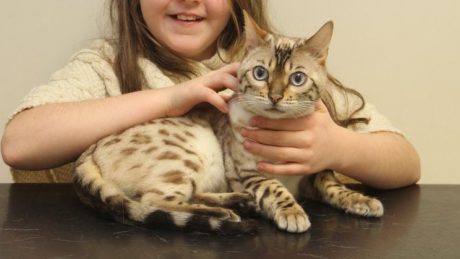
Hamsters don’t normally need to visit the vet: While they have short lives of just two to three years, they tend to be healthy creatures. They don’t need to be vaccinated, and they don’t need to be treated for fleas or worms. As long as their owners pay attention to their basic needs, with a decent sized cage, a healthy food and water supply, and plenty of bedding for them to burrow into, hamsters usually thrive.
hamsters are solitary animals
Unlike many other small pets, they are solitary individuals, enjoying living on their own, and fighting with any other hamsters who are placed inside their territory. Hamsters can sometimes have a sharp bite, but with frequent handling from an early age, they usually grow up to be sociable, friendly creatures who enjoy being handled. For many children, they’re their first pet, and they can become close friends.
Muffin is a good example: he enjoys playing with Beatrice and her sisters, and he has never given anyone a painful bite. He’s fed a standard hamster diet which is a mix of a variety of cereals and pellets, and Beatrice also gives him occasional treats such as peanuts or pieces of cheese. He lives in a large cage, occasionally being taken out to play with the family. He has every appearance of being a contented, healthy hamster.
muffin began to behave differently
A few weeks ago, something changed. Beatrice noticed that Muffin was behaving differently in certain ways. He seemed to spend ages in his food bowl, pushing the cereal around rather than tucking into it. He was also struggling with his water bottle. Instead of suckling quickly and efficiently from the nozzle, he started to spend a long time nibbling it, as if he couldn’t drink properly. Beatrice tried offering him different treats by hand, and she noticed that he was finding it difficult to eat hard objects (like peanuts ) while he gobbled down softer food (like cream cheese).
Beatrice guessed that there might be something wrong with his mouth, but it was difficult for her to see, as he’s wriggly and while he likes being held, he doesn’t like staying still. She asked her sister to hold him tightly, while she tried to peer into his mouth. She was then able to glimpse his front teeth, and she could see that one single tooth was overgrown, protruding upwards and outwards like an miniature elephant’s tusk.
a trip to the vet
She brought him to see me, and I confirmed her diagnosis. For some reason, one of Muffin’s incisor teeth had grown at an odd angle. As with rabbits, hamsters’ teeth keep growing throughout their lives. They are kept short by gnawing on hard objects, and by rubbing off the teeth on the opposite side.
Beatrice does give Muffin objects to chew, like pieces of wood and treats, but the problem was that this single tooth was at a peculiar angle. This meant that however much he chewed, he couldn’t wear it down.
My treatment for Muffin was simple. I just had to trim the single overgrown tooth. One of my veterinary nurses held him still, and I was able to shorten the tooth back to its normal level. It was a quick, easy job, and the problem was solved. As soon as he went back home, Muffin tucked hungrily into the dry hamster mix that he’d been avoiding, and he drank normally and deeply from the water bottle at the side of his cage.
The only question that remains is whether the tooth will continue to grow at an odd angle. Beatrice is watching carefully: if Muffin develops another “hamster tusk”, she’ll bring him back to see me.




Please note that I am unable to answer veterinary questions in comments. If you have questions or concerns about your pet's health it is always better to contact your vet.